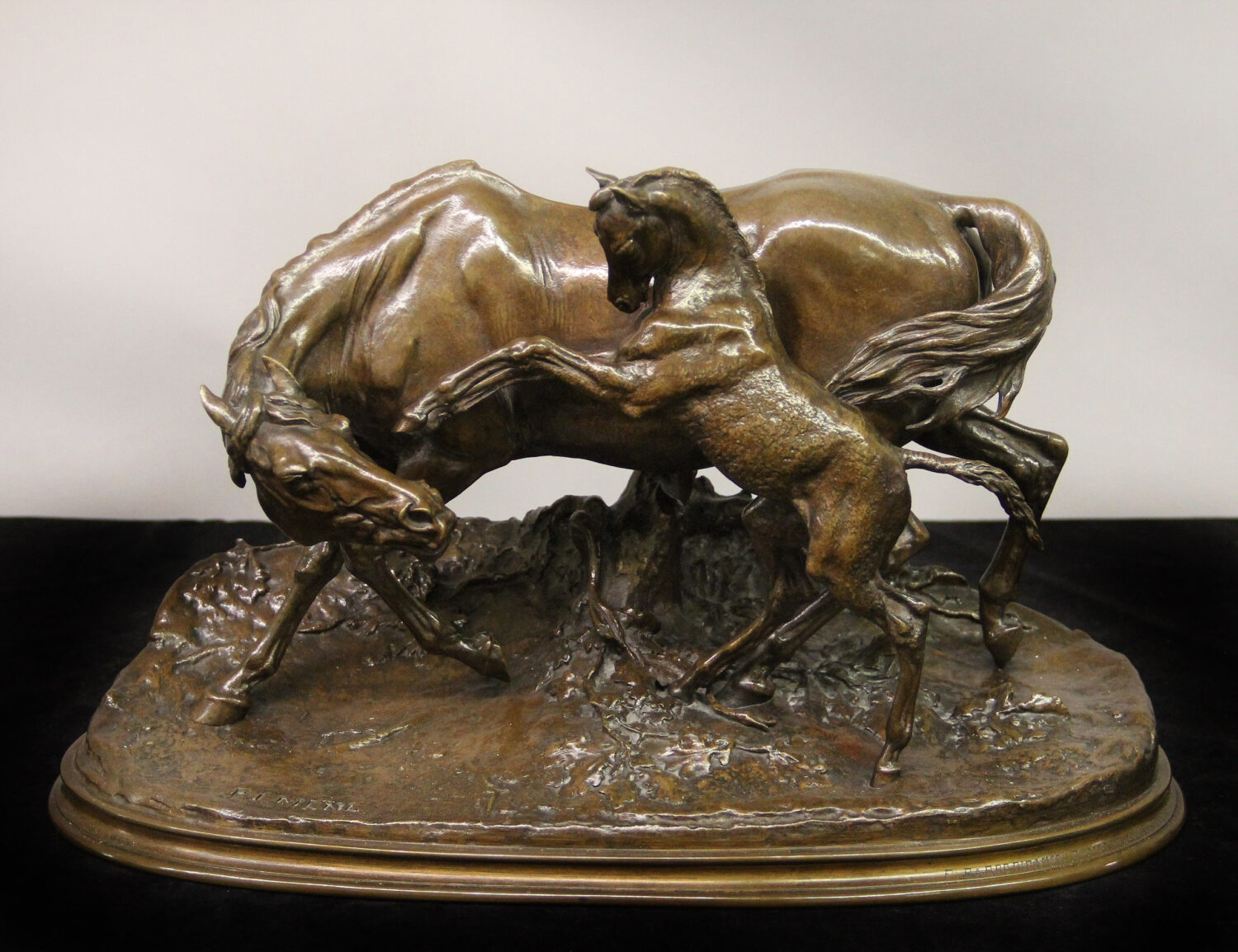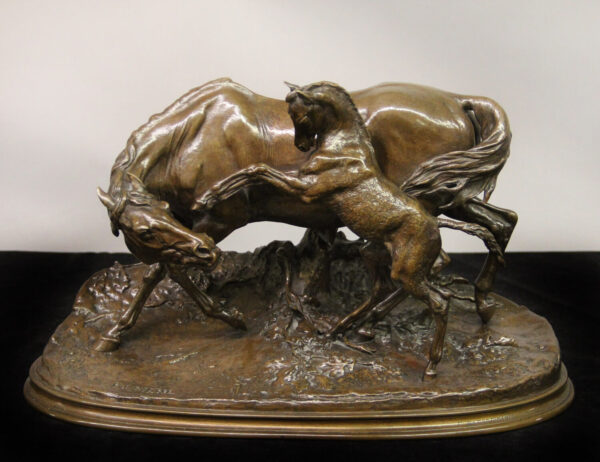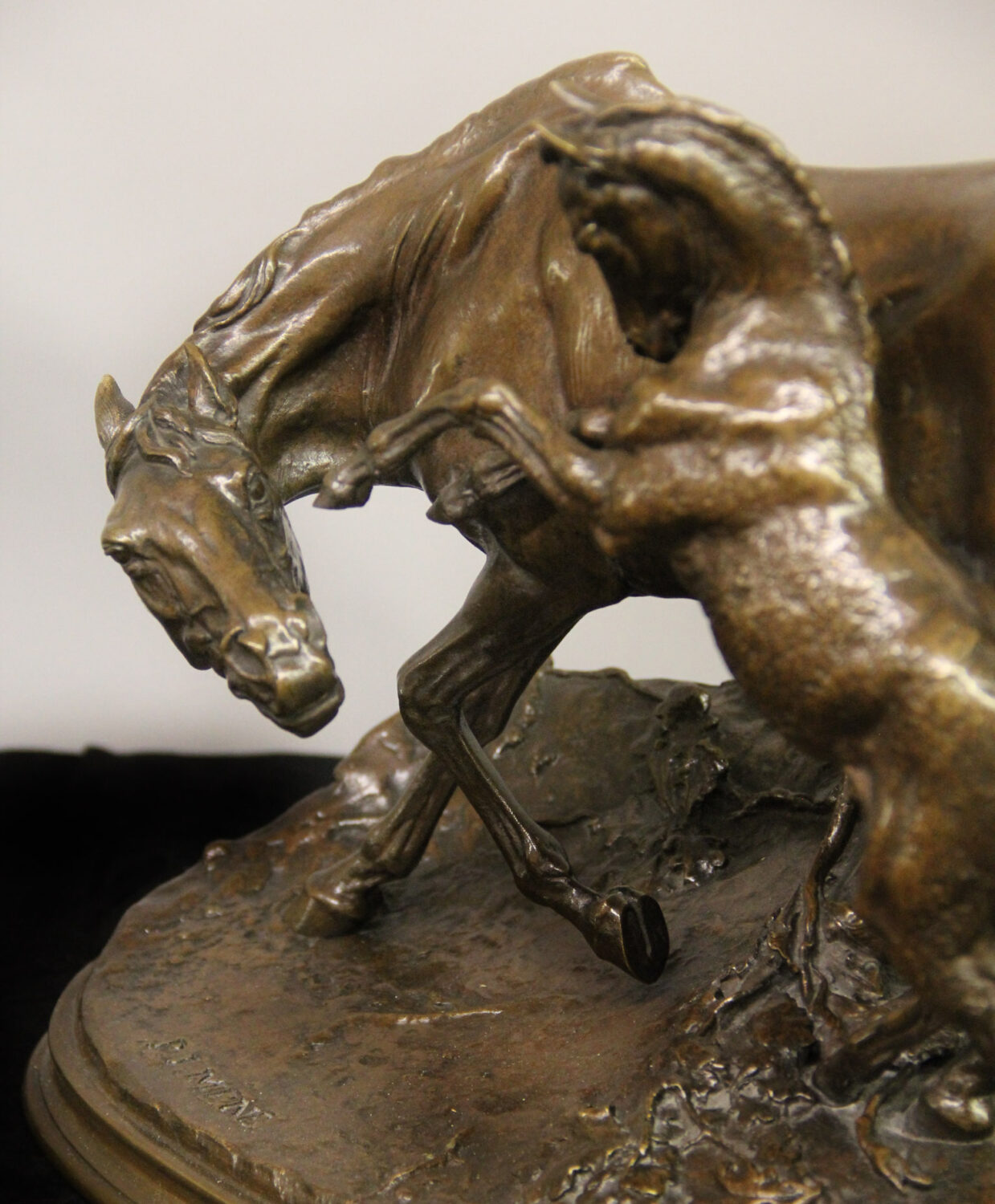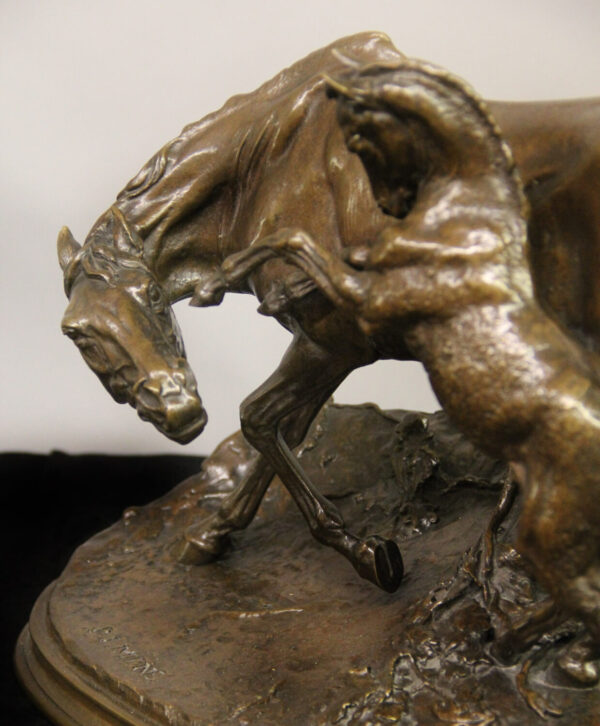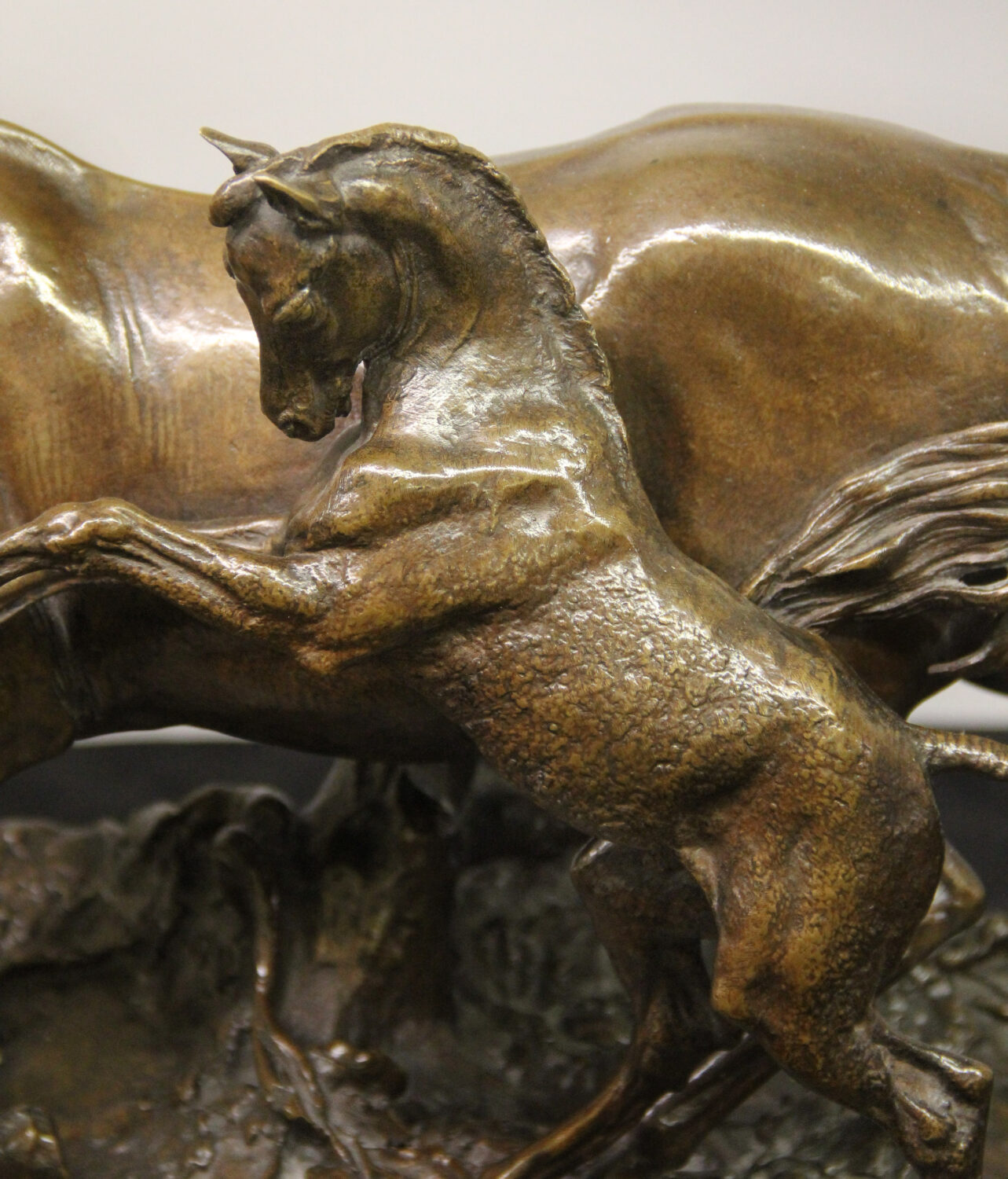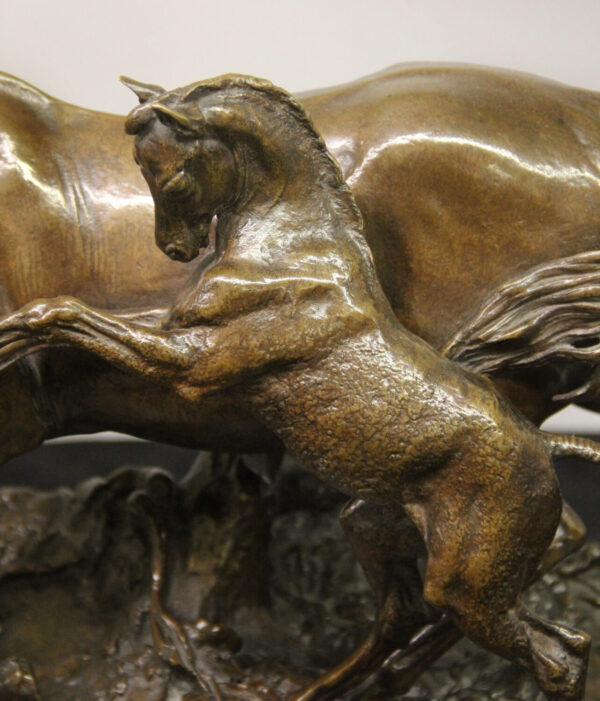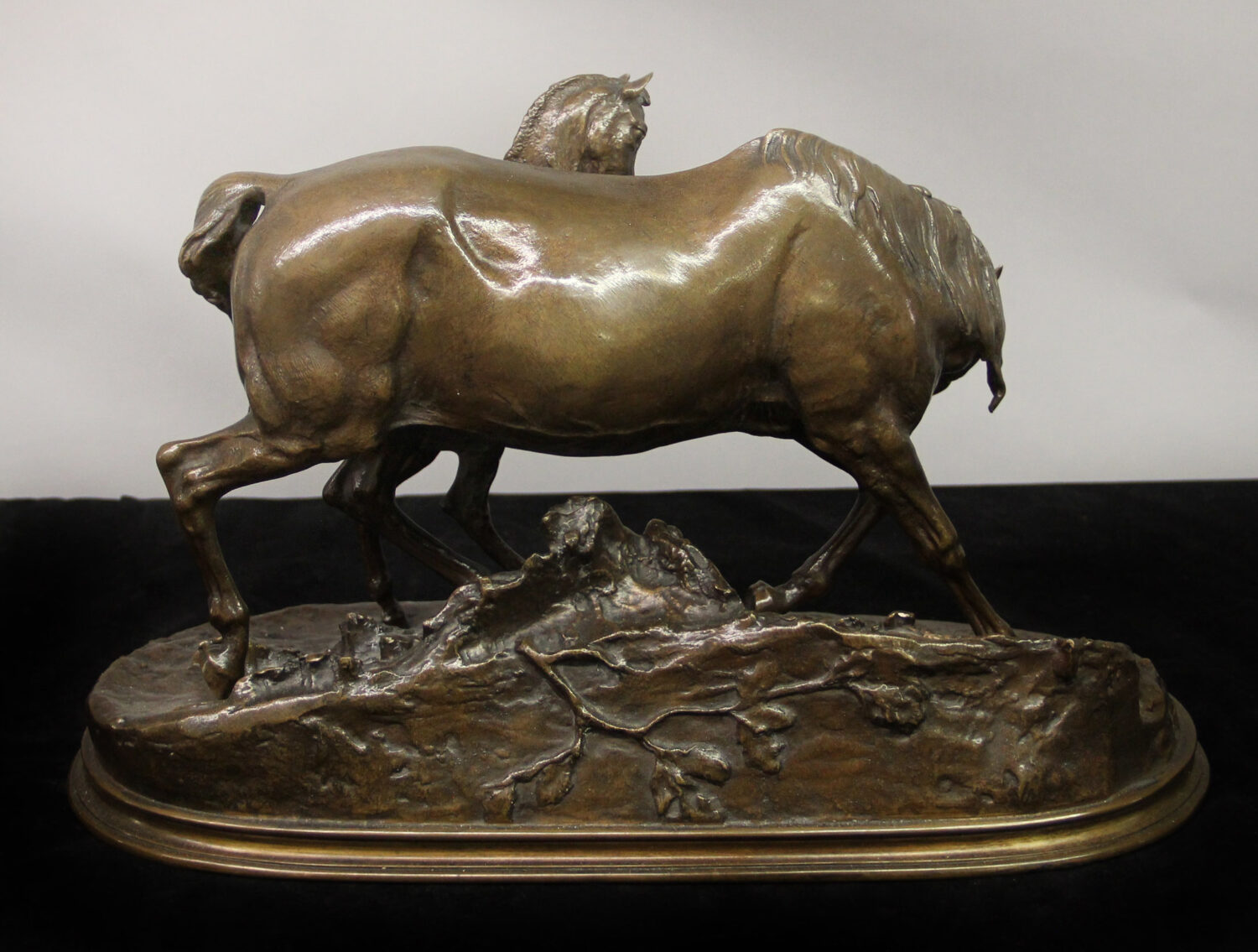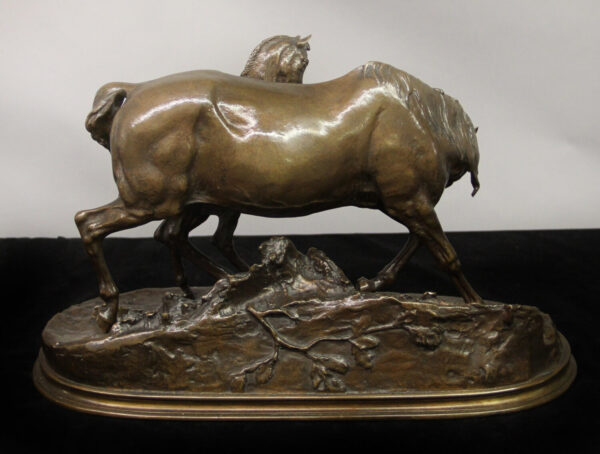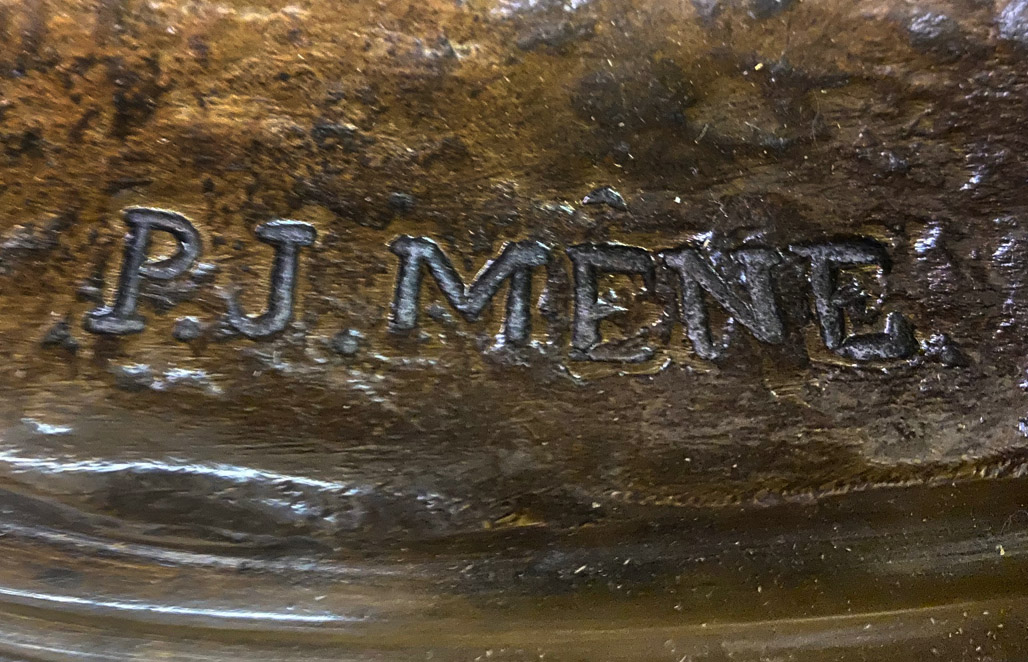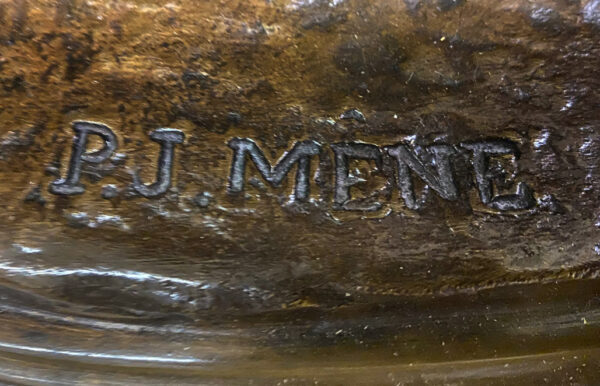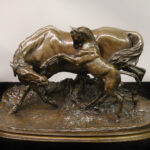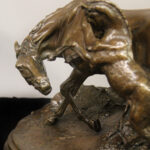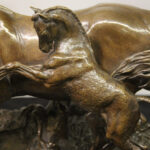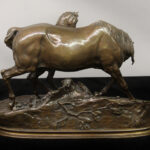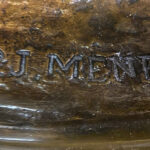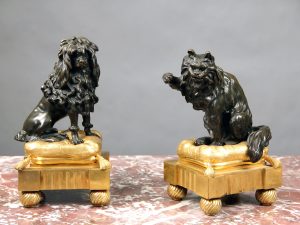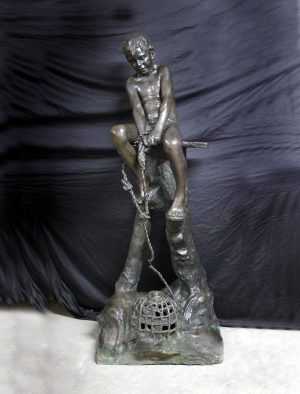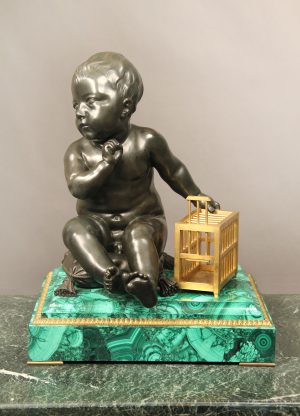An Excellent Quality Late 19th Century Bronze Sculpture of a Mare and Her Rearing Colt by P.J. Mene and Barbedienne
Item # VB49
$15,000
Pierre-Jules Mêne and Ferdinand Barbedienne
Two horses playing on a naturalistic base.
Signed P.J. Mene to the ground and F Barbedienne Fondeur on the base.
Pierre-Jules Mêne (25 March 1810 – 20 May 1879) was a French sculptor and animalier. He is considered one of the pioneers of animal sculpture in the nineteenth century. Mêne was born on 25 March 1810 in Paris, France. As a teenager he worked for his father, a metal turner. By 1837 he was casting his bronze sculptures in his own foundry. Mêne produced a number of animal sculptures, mainly of domestic animals including horses, cows and bulls, sheep and goats which were in vogue during the Second Empire.
Ferdinand Barbedienne (1810-1892) was a highly important and prolific bronze founder of one of the most important French art foundries. He pioneered the use of mounts and, more commonly, bronze sculpture including figures and animals. Barbedienne produced catalogues of bronze reproductions of Greek and Roman classical sculpture and experimented with ‘champleve’ and ‘cloisonné’ enamels during the third quarter of the century. Barbedienne exhibited several pieces of furniture at the 1855 Paris Exhibition including a gilt-bronze mounted oak dressing table and a gilt-bronze mounted ebony veneered bookcase. Both pieces were executed in his favoured Renaissance revival style for furniture. Furniture with mounts signed by Barbedienne is extremely rare.
The Barbedienne foundry employed up to three hundred skilled labourers, handling the casting of numerous national monuments and architectural schemes. Ferdinand Barbedienne himself also took an active part in the promotion of contemporary sculpture and became one of the founders for Davis d’Angers’ medallions as well as much of Rude’s sculpture. His signature varied from hand written capitals to stamp in capitals, usually ‘F. Barbedienne, Fondeur’ or ‘BARBEDIENNE PARIS’. In 1839 Barbedienne collaborated with the inventor Achille Collas who had succeeded in enlarging and reducing works of art to arbitrary sizes by a simple mathematical calculation, allowing the accurate reduction of classical and contemporary marbles for the purpose of reproduction in bronze. In 1850 Barbedienne was commissioned to furnish the Paris town hall for which he was awarded with the ‘medaille d’ honneur’ at the Paris World Exhibition in 1855.
Details:
Height – 12 inches / 30cm
Width – 19 inches / 48cm
Depth – 8.5 inches / 22cm

